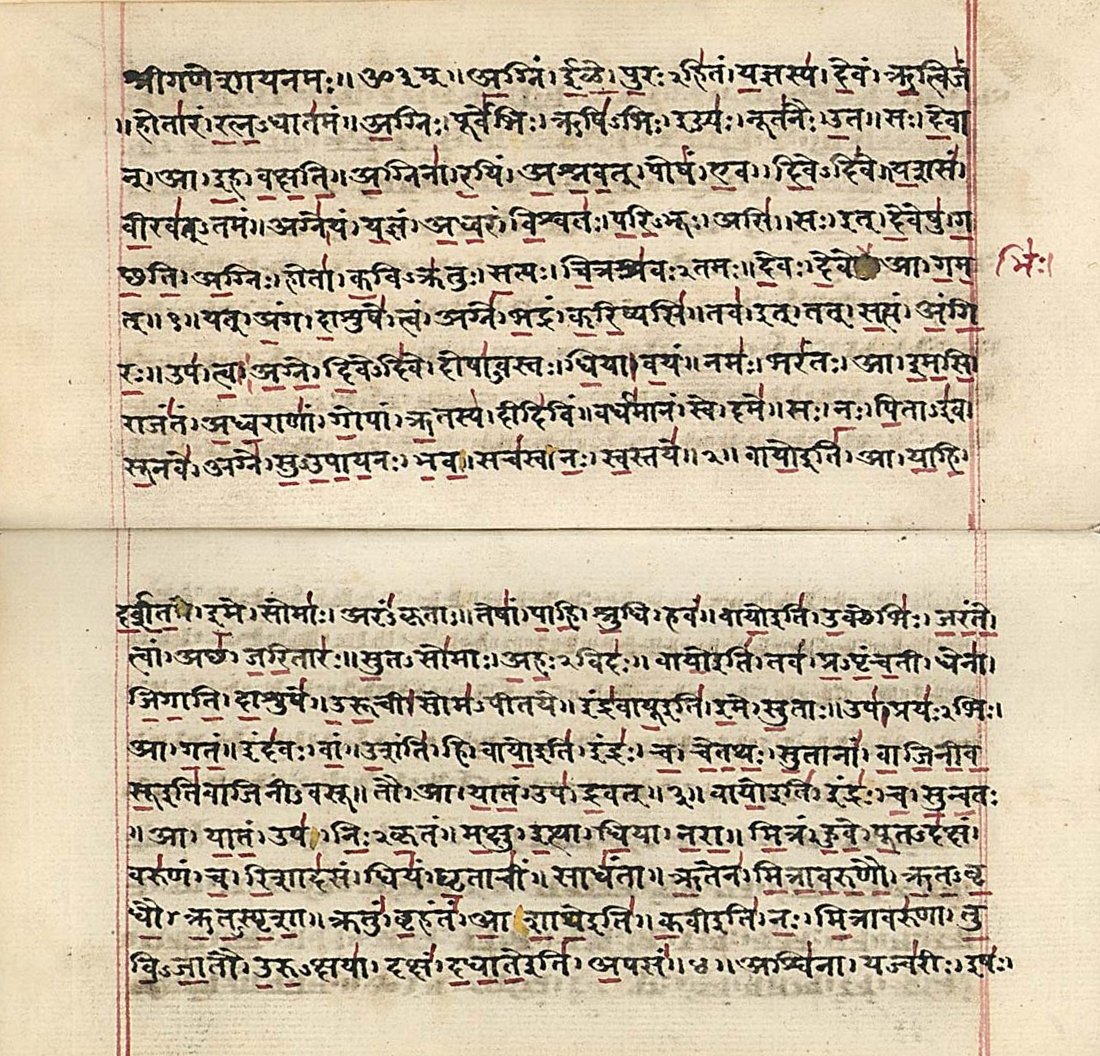History of India
- Introduction to Ancient India
- The Mauryan Empire
- Post-Mauryan India and the Golden Age
- Early Medieval India
- The Delhi Sultanate
- The Mughal Empire - Part I
- The Mughal Empire - Part II
- The Advent of European Powers
- The British Raj - Part I
- The British Raj - Part II
- Independence & Partition
The Vedic Period
Rigvedic India: An Insight into the Earliest Aryan Society

Most ancient Veda of the Hindus.
The Rigvedic period, also known as the Early Vedic period, marks the beginning of the historical period in India. This era is named after the Rigveda, the oldest of the four Vedas, which is a collection of ancient Indian scriptures. The Rigvedic period is believed to have lasted from around 1500 BC to 1000 BC.
Aryan Society and Its Structure
The society during the Rigvedic period was primarily tribal and pastoral. The basic unit of society was the family or 'kula', which was a group of people related by blood. Several families together formed a village or 'grama'. A group of villages constituted a tribe or 'jana'. The tribes were often at war with each other, primarily for cattle and land.
The society was divided into four main groups or 'varnas': the Brahmins (priests and scholars), the Kshatriyas (warriors and rulers), the Vaishyas (merchants and farmers), and the Shudras (servants and laborers). However, this division was not rigid during the Rigvedic period, and there was a possibility of movement between the varnas.
Political Organization
The political organization during the Rigvedic period was quite simple. The tribe or 'jana' was the largest political unit. Each tribe was ruled by a chief known as the 'raja'. The position of the raja was not hereditary, and he was often chosen by the tribal assembly or 'sabha'. The raja was primarily a military leader, and his main duty was to protect the tribe from enemies.
Economic Life
The economy during the Rigvedic period was primarily pastoral. The Aryans were semi-nomadic people who moved from place to place with their herds of cattle. Cattle were the most important form of wealth, and they were often the cause of conflicts between different tribes.
Agriculture was also practiced to some extent, with barley being the main crop. Trade was in its nascent stage, and barter was the main form of exchange. The use of metal was limited, and the tools and weapons were primarily made of stone and wood.
Religious Beliefs and Practices
The religion of the Rigvedic Aryans was a form of nature worship. They worshipped various natural forces as gods, such as Agni (fire), Indra (rain and thunder), Varuna (cosmic order), and Usha (dawn). The religious rituals were complex and involved the offering of 'soma' (a sacred drink) and animal sacrifices to the gods.
The Rigveda contains many hymns dedicated to these gods. The hymns were composed by the rishis (sages), and they were recited during the religious rituals. The recitation of the hymns was believed to please the gods and bring prosperity to the tribe.
In conclusion, the Rigvedic period laid the foundation for the later developments in Indian society, politics, economy, and religion. It was a period of transition from a semi-nomadic pastoral life to a more settled agricultural life. The Rigveda, with its rich collection of hymns, provides a valuable insight into the life and beliefs of the people during this period.